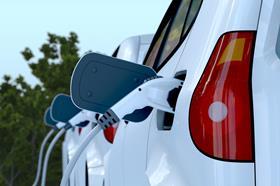’With the EV market, what you have got is a different set of historical data,’ says head of sales
According to Allianz Partners, there has been a shift in motorists wanting to make an electric vehicle (EV) their next purchase.

Figures released in its States of Mind series report, published earlier this year (20 June 2023), revealed that the majority of road users (60%) wanted to make the switch, with there being more electric vehicles on the market.
It highlighted that 450 models were available in 2021, twice the number available in 2018.
Allianz obtained the data after surveying more than 25,000 consumers across 10 major markets, including Australia, Belgium, Brazil, Canada, China, France, Germany, Italy, the UK and the US.
So, with more consumers opting to go down the electric route, what does it means for insurers? According to Adrian Coupland, head of sales at insurtech Earnix, the shift of motorists wanting to buy EVs was “driving a different underwriting approach and set of principals”.
He told Insurance Times that with the switch to electric being fresh, it meant insurers did not have the same data to assess claims or repair costs.
“It’s an emerging technology,” Coupland said.
“With the EV market, what you have got is a different set of historical data associated with the cost of claims and cost of repair, versus 40 years worth of internal combustion engine claims-based modelling and data.
“So, you have got a different emergence from that perspective, but also the connected impact of the way that motor manufacturers are having to shift their models and financial propositions to consumers.”
’Important role’
Coupland explained that financial propositions were having to be changed because vehicles with internal combustion engines had more consumables and moving parts, although that was not the case with an EV.
Read: Marine insurance claims significantly impacted amid economic headwinds – AGCS
Read: Benefact Group launches EV scheme as part of drive to net zero
Explore more motor-related content here or discover other news stories here
“In the EV market, there are fewer consumables and there are simpler propositions, so that has a different impact,” he said.
The UK government has set big targets for its net zero transition – according to its Net zero strategy: Build back greener report, published in October 2021, the government intends for the UK to be completely net zero by 2050.
By 2030, the sale of new petrol and diesel cars will have concluded and the country’s carbon dioxide emission levels will be reduced by 68% compared to 1990 base levels, the report stated.
Coupland felt that with the way the motor market was changing, underwriters will play a “significantly important role”.
“There are more tools for them to be using and there’s more modelling approaches that can be incorporated [amid] a competitive marketplace where the market is always changing,” he said.
’Behavioural changes’
This came after Gill Nowell, head of EV communications at LV= General Insurance (LV=GI), told Insurance Times that insurers must do more if they are to support the UK motor sector in driving the country’s net zero carbon dioxide emissions ambitions.
Nowell said the industry has the capability to become a catalyst for change, which starts with educating motorists on the benefits of driving electric vehicles.
“We are all aware of the need to move away from fossil fuels and the [insurance] industry is in a position where we can provide not only the products to insure the vehicles, but also be part of the wider process which enables drivers to make the switch,” she added.
Michael Maicher, global partner and director at Allianz Partners, added that while road users were making “significant behavioural changes”, more needed to be done to encourage the switch to electric.
“The role of widespread and effective infrastructure in the green revolution cannot be overemphasised,” he said.
“A lack of charging stations in particular is holding back many from embracing greener options.
“More public and private investment in mobility will create a virtuous circle, increasing the pace of technological change and making sustainable solutions cheaper and even more attractive.”
Hosted by comedian and actor Tom Allen, 34 Gold, 23 Silver and 22 Bronze awards were handed out across an amazing 34 categories recognising brilliance and innovation right across the breadth of UK general insurance.







































No comments yet